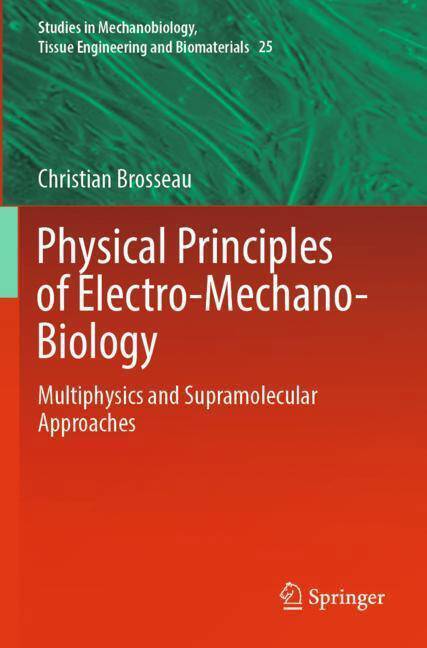
- Retrait gratuit dans votre magasin Club
- 7.000.000 titres dans notre catalogue
- Payer en toute sécurité
- Toujours un magasin près de chez vous
- Retrait gratuit dans votre magasin Club
- 7.000.0000 titres dans notre catalogue
- Payer en toute sécurité
- Toujours un magasin près de chez vous
Physical Principles of Electro-Mechano-Biology
Multiphysics and Supramolecular Approaches
Christian Brosseau
158,45 €
+ 316 points
Format
Description
This book covers the recently developed understanding of Electro-Mechano-Biology (EMB) in which the focus is primarily on the couplings between the electric and mechanical fields. The emphasis lies on the analytical and computational aspects of EMB at the cellular level. The book is divided into two parts. In the first part, the author starts by defining and discussing the relevant basic aspects of the electrical and mechanical properties of cell membranes. He provides an overview of some of the ways analytical modelling of cell membrane electrodeformation (ED) and electroporation (EP) appears in a variety of contexts as well as a contemporary account of recent developments in computational approaches that can feature in the theory initiative, particularly in its attempt to describe the cohort of activities currently underway. Intended to serve as an introductory text and aiming to facilitate the understanding of the field to non-experts, this part does not dwell on the set of topics, such as cellular mechanosensing and mechanotransduction, irreversible EP, and atomistic molecular dynamics modelling of membrane EP.
The second (and larger) part of the book is devoted to a presentation of the necessary analytical and computational tools to illustrate the ideas behind EMB and illuminate physical insights. Brief notes on the history of EMB and its many applications describing the variety of ideas and approaches are also included. In this part, the background of the first principles and practical calculation methods are discussed to highlight aspects that cannot be found in a single volume.
Spécifications
Parties prenantes
- Auteur(s) :
- Editeur:
Contenu
- Nombre de pages :
- 301
- Langue:
- Anglais
- Collection :
- Tome:
- n° 25
Caractéristiques
- EAN:
- 9783031379833
- Date de parution :
- 03-09-24
- Format:
- Livre broché
- Format numérique:
- Trade paperback (VS)
- Dimensions :
- 155 mm x 235 mm
- Poids :
- 476 g

Les avis
Nous publions uniquement les avis qui respectent les conditions requises. Consultez nos conditions pour les avis.






